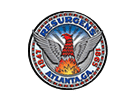By Sonny Day

/
RSS Feed
In this episode, we explore the essential goals of effective website navigation, emphasizing the importance of user-centric design to enhance visitor experience and satisfaction. Key objectives include:
- Clarity and Obviousness: Designing navigation that is straightforward ensures visitors can easily find information without confusion.
- Consistency: Maintaining uniform navigation elements across all pages helps users predict and understand site structure, fostering a seamless browsing experience.
- Contextual Relevance: Aligning navigation with the overall site content ensures that links and menus are pertinent to the user’s current context, aiding in intuitive exploration.
- Alternative Pathways: Providing multiple navigation options, such as search functions or supplementary menus, assists users in finding information through various routes, accommodating different preferences.
- Clear Visual Cues: Utilizing distinct visual indicators like highlighted links or breadcrumb trails guides users through the site, making it evident where they are and where they can go next.
- Purpose Alignment: Ensuring that navigation design aligns with the site’s objectives and audience expectations enhances usability and achieves business goals.
By focusing on these goals, websites can create a navigation system that not only meets business objectives but also provides a satisfying and efficient user experience.








